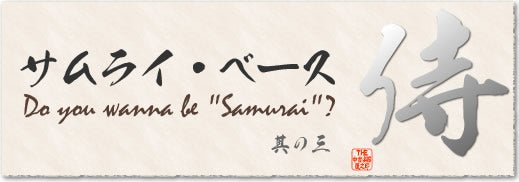

Why does B-class make people so passionate?

The cheapness that is common in B-class food, fashion, and movies. This cheapness is the origin of "soul food", which is not about whether it is good or bad, but about whether you like it or not.
The term "B-kyu" is used to refer to the second-rate or second-rate food that is not highly rated by the general public but has a small group of lovers, while the "A-kyu" is the first-rate or highly rated food in a certain field. The key is the atmosphere, I guess.

In the world of musical instruments, there are also "B-class" instruments, and they are positioned as "Bizarre.
Bizarro instruments, which have a different worldview from mainstream brands, are categorized as B-class instruments, which means eccentric in French.
Their rustic sound and adorable designs give them an appealing appeal.
The word "bizzarro" is derived from the Italian word "bizzarro" and was introduced to the United States via Latin Spain, Portugal, and French.

It is a common theory that the term "bizzarro" for musical instruments is derived from "BIZARRE MAGAZINE," a subculture magazine published in the 1940s.
In the world of fashion, accessories, and culture, the Bizarre worldview is creating ideas in the underground, based on a sense of imagination that has never existed before.
In the world of musical instruments in Japan, the Awoi Sound Wave Laboratory, the predecessor of Teisco in 1964, has been actively producing electric musical instruments since the 1940s, leaving behind many masterpieces of electric instruments that make full use of electric circuitry, and these treasure trove of ideas produced in the 1960s are still being produced 50 years later. These treasure troves of ideas produced in the 1960s are still influential as vintage Bizarre 50 years later.


In the world of musical instruments in Japan, the Awoi Sound Wave Laboratory, the predecessor of Teisco in 1964, has been actively producing electric musical instruments since the 1940s, leaving many masterpieces of electric instruments that make full use of electric circuits, and the treasury of these ideas produced in the 1960s are still influential as vintage Bizarre 50 years later. These treasure troves of ideas produced in the 1960s are still influential as vintage Bizarre 50 years later.
List price at the time of release: 21,000 yen
Teisco EB200/NB-4
The NB-4, which was released on May 20, 1964 at a price of 21,000 yen, is well known for its use by Chosuke Ikariya of the Drifters (light blue) in the movie "The Young Master of Electricity," starring Yuzo Kayama.

|
Fingerboard: Rosewood Weight: 4.5kg |
List price at the time of release: 23,000 yen
Teisco TB-64
The TB-64 baritone guitar, also marketed as the OEM YB-6 to YAMAHA, was priced at 23,000 yen at the time of its release.

|
Body: Lauan Neck: Lauan Fingerboard: Rosewood |

|
From left |
List price at the time of release: 23,000 yen
Teisco KB-2
List price at the time of release: unknown
Teisco EB-BASS TYPE
List price at the time of release: 9,050 yen
Teisco BS-101
List price at the time of release: 32,000 yen
Teisco EBX-200
List price at the time of release: 17,000 yen
Teisco BA-2


YAMAHA, the company that mass-produced masterpieces, was also full of creativity, starting as the predecessor of the current company name in the late 1800s and producing electric basses from the 1960s. The beauty that could be expressed because of its incompleteness formed the idol myth of the early SB bass, and even today, it still shines brightly, highlighting the world of Bizarro.
List price at the time of release in 1968: 45,000 yen
YAMAHA SB-5A

|
Neck: Maple Fingerboard: Rosewood Body: Wig |
List price at the time of release in 1968: 45,000 yen
YAMAHA SB-5A

|
Neck: Maple Fingerboard: Rosewood Body: Wig |
List price at the time of release in 1966: 37,000 yen
YAMAHA SB-2

|
Neck: Maple Fingerboard: Rosewood Body: Wig |
List price at the time of release in 1968: 33,000 yen
YAMAHA SB-2A

|
Neck: Maple Fingerboard: Rosewood Body: Wig |
The feeling is like soul food.
The quality of instruments called "Bizarral" is not high at all.
However, the sensual coolness and the sound sometimes attract some people, and this cheapness is unbearable and makes us love them. In the 60's in Japan, there are such Bizarro basses that are still popular today.
I am a young man, but I am looking forward to the arrival and introduction of the Samurai basses made in Japan in the 60's, which I have not seen yet.


Thank you very much for taking the time to read this article on Japanese Samurai basses and Bizarre basses. We have limited the manufacturers and instruments introduced here to only those made in Japan in the 1960s. Please note that we have limited the manufacturers and instruments introduced here to the domestic market in the 1960s.
The world of Bizarral music is not universally appreciated, and each person has his/her own sense of it.
I am still in the process of learning, but I hope I can be of some help.
Speaking of soul food, there is a restaurant that I have been going to for 25 years since I was in junior high school.
I think that sometimes the impact of being a teenager is matched for a lifetime.
Please try this unforgettable taste.


